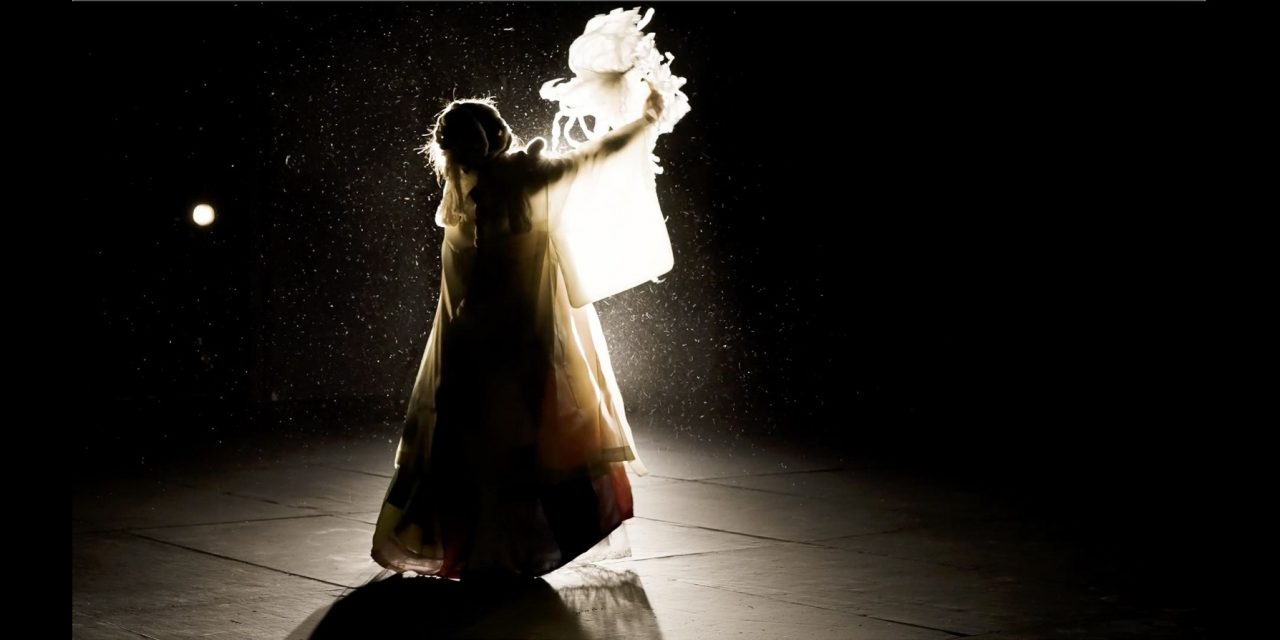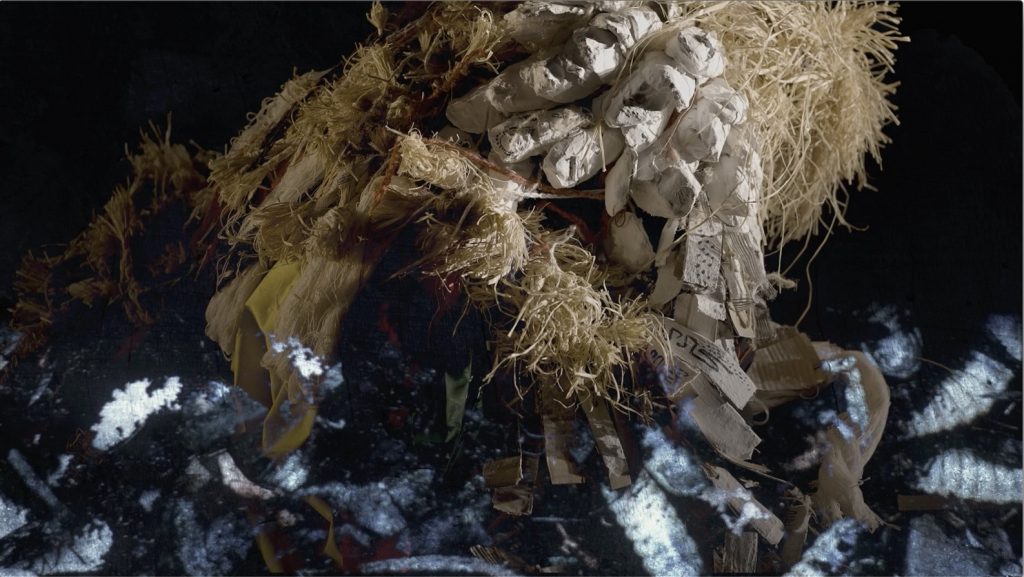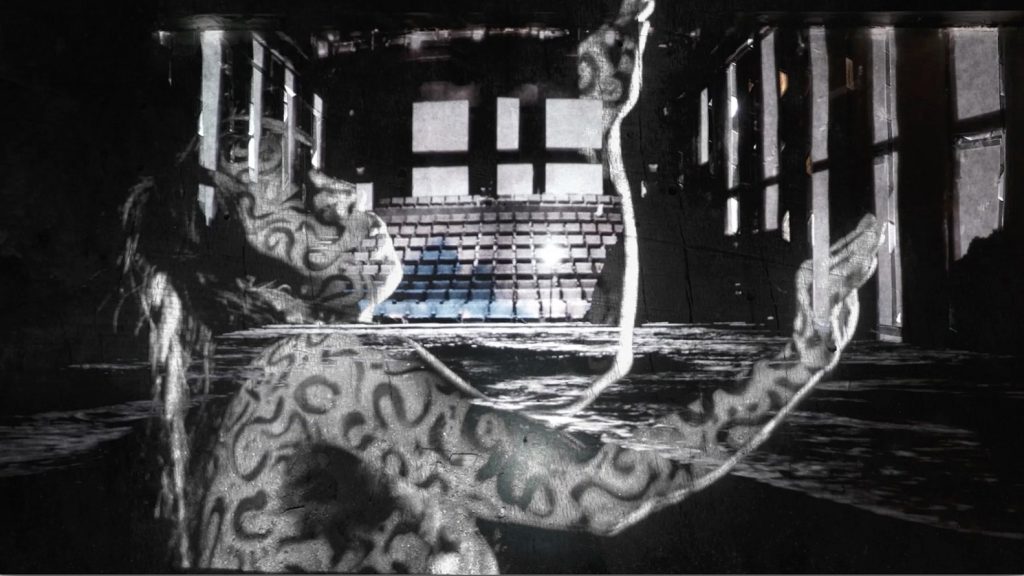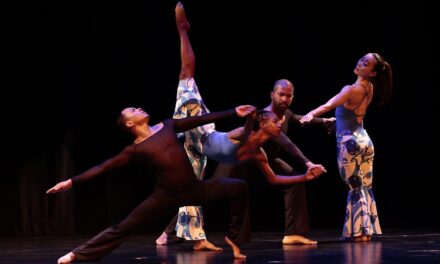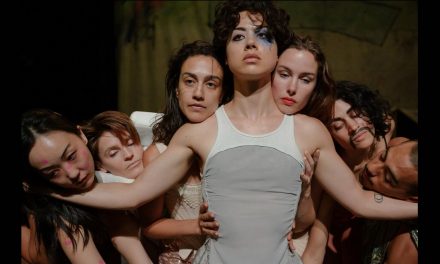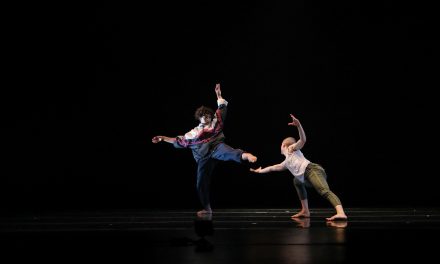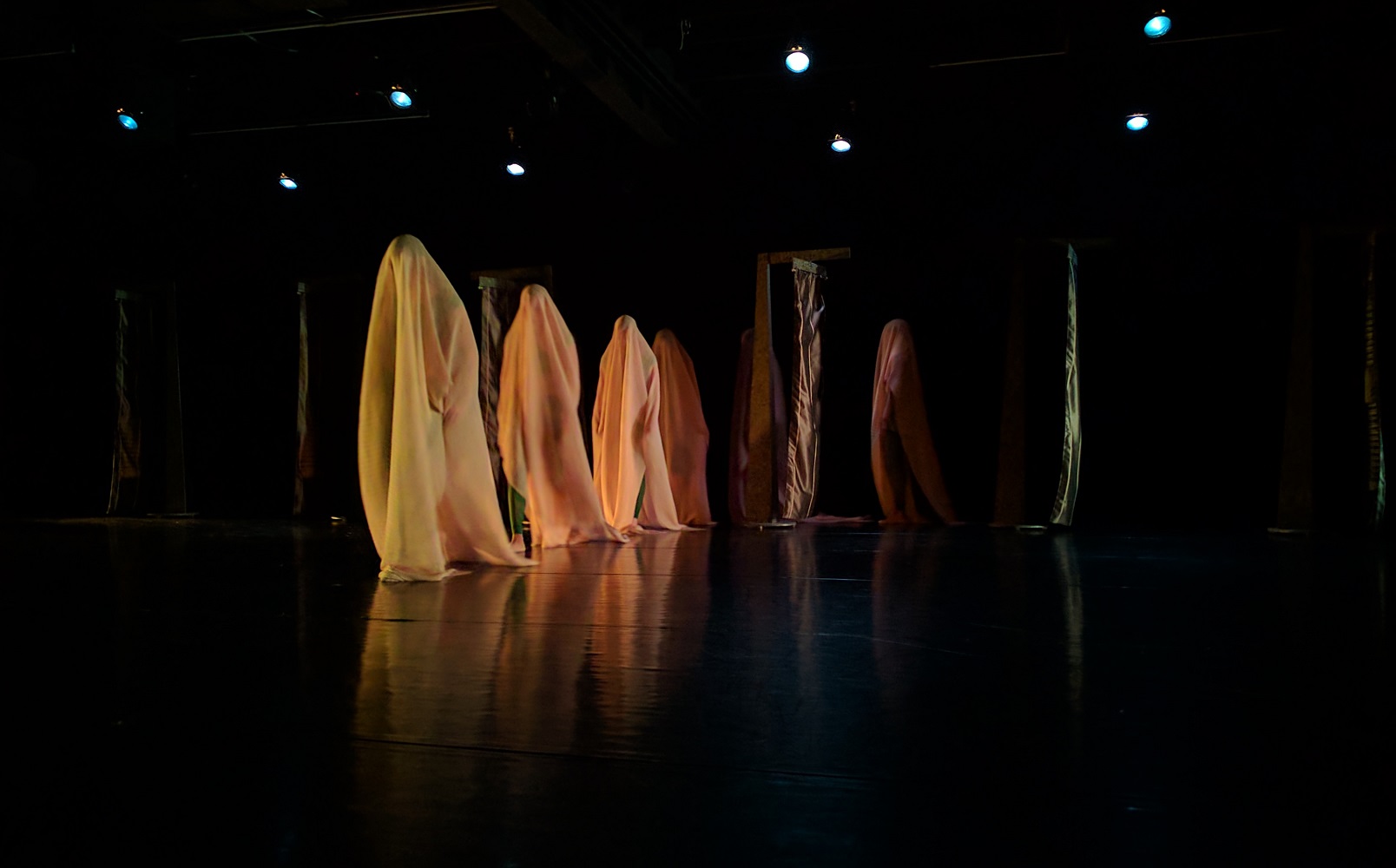Born on the small island Jeju in the Korea Strait known for its beaches and volcanic landscape, Dohee Lee draws her creative vision from traditional Korean music, singing, drumming and dance deep-rooted in Korean indigenous ritual. Lee now lives in the Oakland, California area, adding her talents to the vibrant art scene in and around the Bay Area. Lee uses her art to heal. Not just people but she aims to help heal what she calls the fractured relationships in the urban environment; relationships between humans and the land and restore relationships and histories within communities.
Lee is a performance artist and her talents are vast. She has an amazing singing voice, she creates sculptures out of paper that appear based in ancient Korean history, she is a musician, and she dances. Another of her talents is to gather a team of incredible visual and media arts together to create ritualistic art that conjure up within viewers a myriad of ancestral memories long thought forgotten.
After a live-performance was cancelled due to the Covid pandemic, on March 19, 2021, REDCAT premiered Lee’s visually stunning film version of MU/CONNECTOR: CHILSEONG SAENAMGUT preceded by a visual poem and prayer Winter to Spring, Death to Rebirth which featured participants of a workshop led by Lee. The latter featured the participants in a Zoom setting utilizing hand gestures to show what appeared to be the capturing, holding and then passing along positive energy. This was followed by the ritual of tying a loose knot in ribbons and string of different colors, thickness and textures. This was followed by the person holding up a sheet of paper with a single word or phrase such as Shame, Shadows, Grief, Decolonized Land, Dropping not flowing, or Doubt Fear Vulnerability. It felt like a prayer to exorcise negativity or hate.
Conceptualized by Lee, Directed by Lee and Carole Kim and filmed at REDCAT by Carole Kim and Meena Murugesan, MU/CONNECTOR: CHILSEONG SAENAMGUT was structured in four parts: Chogamjae: Calling for the spirits; Chilseong Saenam – Duringut : Ritual of Sickness/ Illness/ Destruction; Dabdori : Prayer for purge and releasing the destructive spirit; and Neokdurim: Prayer Song for bringing back lost spirit, lost nature, lost land and lost humanity.
We first see a starkly furnished room with cut out sheets of paper draped across one of its windows and up to the ceiling. A small table with a candle and small ritual bowls neatly positioned on top sits against the wall. A woman, Lee, enters and begins taking papers from a nearby straw basket, folds them into a long tube, on which she paints a series of lines and symbols. She then cuts strips of teal, red, and yellow fabric, places shells and coins into the basket and ties the fabric strips onto the basket’s handle. The basket is a vessel and she uses it as an offering to summon forth spirits.
The scene shifts to outside facing a small ocean side mountain. Lee as the spirit is dressed in all white and holding a sprig of some kind of plant. The spirit’s dress is elaborate, with layers and what appears to be a white form attached to her back as she dances on the beach before a setting sun. Beautiful.
Returning to an interior setting, Lee lines the bottom of a small basket with white cloth, pours in partially ground up rice, two of the tubular sculptures that she made earlier, three eggs and what looked like ears of purple corn. Seated before three lit white candles in what appears to be a wooden or tree cave-like environment, Lee performs her next ritual which caused the cave’s entrance to be covered by growing wood fiber.
The film shifts to green vines and foliage, inside which eventually appear a hand, a face and then a symbol covered body or spirit. The symbols are the same as what Lee painted on the paper tubes. Grey larva begin crawling through the foliage and the head of the spirit becomes visible, wearing a headdress of material that relates to what Lee put in the ritual basket. The spirit dances amongst the foliage and other textures via cinematic overlays and the ghostly spirit enters a transformed REDCAT theater with the floor filling up with the ocean’s rising tide.
The camera is situated at the back of the theater, looking directly at the empty house seats and the technical booth. Most of the scene is black and white, with the seating area in an eerie blue hue waiting for an audience to return.
Lee’s vocal talents show up next as she performs in the theater. White gauze-like material is braided into her long black hair and a long white coat is worn over a dress that has the teal, red and yellow colors seen earlier in the film. The beginning of Lee’s song reminded me of the incredible post modern choreographer and singer, Meredith Monk but through the technology known as sampling, adds layer upon layer of vocals which demonstrates her voice’s wide musical range. Lee’s dance and her song are hauntingly beautiful and I felt that she had indeed been possessed by the spirits that she had brought forth.
The cutout paper suddenly drapes across the theater’s seating with the return of the pre-show’s visual prayer participants projected into the center. Another projection of the making of a ritual basket appears in one of the technical booth windows, and Lee brings us back to the beginning of life’s cycle; Winter to Spring, Death to Rebirth.
The film’s Editor was Carole Kim. The Cinematography for Part I – Chogamjae: Calling for the spirits was by Emily Encina. For Part II – Chilseong Saenam – Duringut : Ritual of Sickness/ Illness/ Destruction, the Multimedia Installation was by Carole Kim; Cinematography by Emily Encia, Carole Kim; Movement by Dohee Lee; Music by Dohee Lee and Adria Otte ; and Costume Design was by Dana Kawano, Dohee Lee. Part III – Dabdori : Prayer for purge and releasing the destructive spirit, the Movement and Music was created by Dohee Lee; Multimedia Installation by Carole Kim; and Costume Design by Soyeon Shin. Part IV – Neokdurim: Prayer Song for bringing back lost spirit, lost nature, lost land and lost humanity, the Music was by Dohee Lee, and Visual Prayers by Workshop Participants.
To visit Dohee Lee’s website, click HERE.
Written by Jeff Slayton for LA Dance Chronicle.
Featured image: Dohee Lee in MU/CONNECTOR: CHILSEONG SAENAMGUT – Screenshot by Carole Kim, courtesy of REDCAT.

